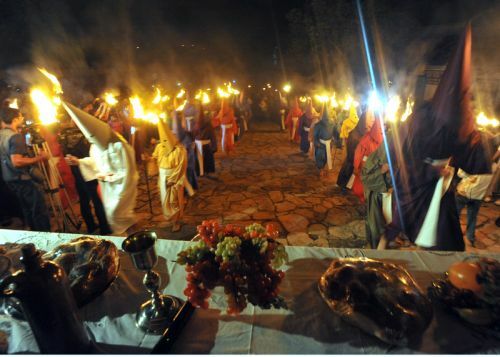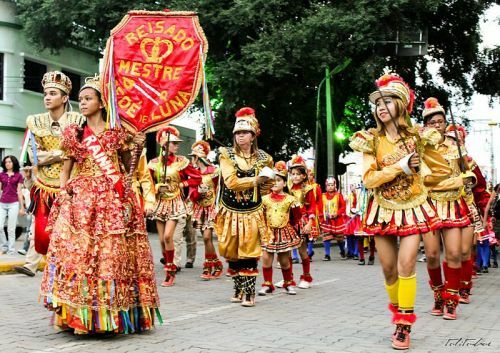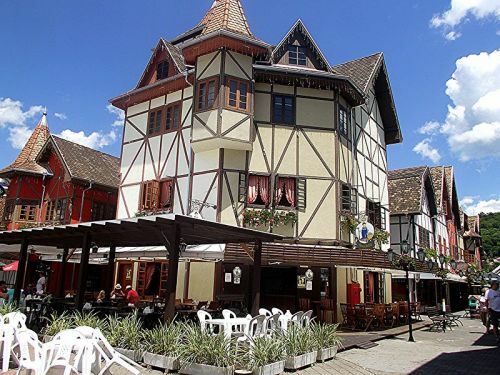The cultural diversity in Brazil is represented by the numerous traditions, religious and artistic manifestations, cooking, beliefs and mores, different groups of individuals in different Brazilian regions.
Due to its territorial extension and the process of settlement with people from different origins, Brazil is a country with immense cultural diversity.
 Frevo, traditional dance from the state of Pernambuco.
Frevo, traditional dance from the state of Pernambuco.
The origin of the Brazilian cultural formation is linked, above all, to the indigenous, to the enslaved blacks and to european immigrants.
The first immigrant was the Portuguese colonizer and over the following centuries, other nationalities also stood out in Brazilian migration, such as Italians, Germans, Japanese and Poles.
From north to south, traditions, festivals, rituals and food vary significantly. Cultural manifestations are also influenced by local characteristics, such as climate and vegetation, and social and economic aspects.
Between the regions of the country there are quite significant differences in cultural formation, but even within a region or state it is possible to find a great diversity of traditions and manifestations cultural.
The culture of the most varied groups in Brazil is an element of identification, it is what shapes individuals who think, feel and act in their social circles.
It is the cultural manifestations that provide identity and tell the story of a country, so its preservation is very important.
For the culture of a country to be preserved it is necessary to create public policy of appreciation and recognition of traditions and also that these themes are included in the school curricula.
know more about cultural diversity and Afro-Brazilian culture.
Cultural diversity in regions of Brazil
See below, a little of the culture, traditions and cuisine in each region of Brazil:
North
In the northern region, two important cultural events take place: the Festival of Parintins in the Amazon and the Nazare's Cirio in Belém do Pará.
The Parintins Festival has presentations similar to carnival, with costumes, floats and plot, and there is a competition between the capricious ox and the guaranteed ox.
The Círio de Nazaré is a Christian religious manifestation of devotion to Our Lady of Nazaré and brings together around 2 million people.
In this region, the cuisine has a strong indigenous influence, especially in the use of fish and cassava. Also typical of this region are carne de sol, jambu and tucupi (boiled cassava broth).
 Festival of Parintins.
Festival of Parintins.
Learn more about indigenous culture.
North East
In the northeast, one of the most traditional artistic manifestations is the literature of twine, which is a literary genre produced in verse. Texts are written on leaflets and hung on strings in presentations, hence the name "cordel".
know more about literature of twine.
Other famous traditions in this region are maracatu, bumba meu boi, carnival, capoeira, frevo, coco, ciranda, the feast of Iemanjá, marujada and the washing of the Bonfim stairs.
The typical dishes of the region are: acarajé, vatapá, caruru, sarapatel, dried meat, cornmeal cake, rice pudding, hominy, goat buchada, tapioca, pamonha, green beans and coconut candy.
 Literature of twine.
Literature of twine.
Learn more about frevo.
Midwest
The Midwest is a region of great diversity due to the influences of other states, indigenous peoples and even other countries such as Bolivia and Paraguay.
In this region, some of the famous cultural manifestations are the cavalhada, the fire and the cururu. Among the typical dishes are rice with pequi, angu, Bolivian rice, cural and fish from the wetland.
 Procession of the Stove.
Procession of the Stove.
Southeast
In the Southeast, some of the traditions are the festivals of the divine, carnival, bumba meu boi, peão boiadeiro, samba de Cartão, caiapó, old men's dance, folia de reis and jongo.
The typical dishes of this region are couscous from São Paulo, fried cassava, capixaba moqueca, cheese bread, feijoada, bean tutu, tropeiro beans, Minas cheese, farofa and cod cake.
 Kings' revelry.
Kings' revelry.
Learn more about Carnival.
South
The south has several cultural manifestations related to european immigrants, mainly Germans, Italians and Japanese.
The descendant groups of these immigrants preserve cultural practices in dance, cooking and also in architecture. It is common to find entire cities built in the German style, for example.
With regard to cuisine, chimarrão, especially in Rio Grande do Sul, fish pirão, barreado (meat cooked in a clay pot) and wine production stand out.

See also the meaning of popular culture, Brazilian folklore, culture It's from Brazil Flag Day.


